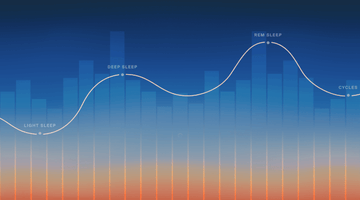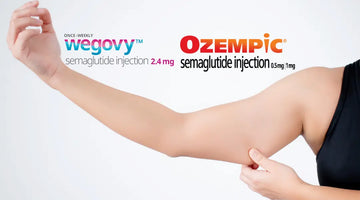An issue we frequently discuss with older athletes is age-related muscle mass wastage, also known as sarcopenia.
Its technical definition is the progressive loss of skeletal muscle in excess of that brought about by the natural ageing process; it may be caused by inadequate lifestyle factors and other issues. It negatively results in decreasing muscle strength and/or physical performance, which brings critical risks for an individual’s quality of life, independence and even mortality.
Research shows that the prevalence of sarcopenia in large populations aged 60–70 years ranges from 5–13%, but increases to 11–50% in subjects over 80. The graphic below gives a good illustration of the potential range of outcomes.

Source: GM Journal Sarcopenia: an emerging geriatric giant
As with all things relating to health, a lot of what happens is driven by genetics. However, the expression of your genes is influenced by lifestyle, habits and things you do on a daily basis.
If you’re concerned about optimising and protecting muscle mass – and staying mobile and strong – as you age, read on to discover the changes you may be able to make to improve your outcomes.
As always, our three main pillars of health and performance are interlinked when it comes to optimisation. We’ve put together a simplified overview to help you understand what’s involved.
The Three Pillars of Healthy Ageing
1. Your mindset
Prioritise improving your knowledge of the subject
The fact you’re reading this article suggests that you’re set up for success. Education and information empower individuals to make informed, data-driven choices, helping them reach their desired outcomes. The first step is understanding that sarcopenia could affect you. The second is researching ways to minimise its impact on your lifestyle. A simple Google search can give you high-level information, which you can dig into further on Google Scholar for more details. This will give you a wide range of ideas and opinions to help you form a hypothesis about the action you need to take.
Create a plan of action
Here at Amino, we love frameworks, systems and processes. We like to think about the body in engineering and physics terms. While humans are more complex than machines, the metaphor can make it easier to explain certain processes. Having a framework can enhance your ability to make progress. Whether this is creating a specific training program to help support your sarcopenia action plan or just keeping a note in your daily planner, the key is to have some simple, effective activities that you can do on a daily basis to consistently maintain your progress. This will help you create long-term and sustainable changes.
Find ways to track your progress and learn from it
Data and testing are key to knowing where you are right now – and how to get where you want to go. This has been proven to be the most effective way of achieving results. But it comes at the price of time and energy, both to set up and maintain. For example, getting calliper body-fat testing to work out your lean muscle mass is an excellent way to see where you are but the gold standard is to use DEXA body-scan technology because it gives you the most reliable data – but it’s not always easy to get one of these scans. Testing is important to track how your muscle mass changes over time and the effects of the interventions you put in place . The key is finding a system that works for you.
Related: How can I make sure I am building muscle
2. Your lifestyle
Exercise to increase your muscular strength
Exercise is widely regarded as one of the best ways to enhance muscular strength and physical fitness. The concept of using it or losing it is 100% true. The type of exercise also affects outcomes. A lot of literature talks about four categories of physical fitness: aerobic exercise, progressive resistance exercise, flexibility and balance. A health-optimisation program will include a little of each. However, we should also add in shock training, or plyometric (jumping) exercises. These have been shown to both increase muscular strength and balance while helping to keep bone and connective tissue strong. This is just as important as building muscle tissue itself. We recommend starting with a small amount of quality work to get the most benefit. Quality over quantity is a guiding principle here.
Improve sleep quality and quantity
As mentioned in previous articles, sleep has a profound impact on our ability to repair and restore muscle mass, while supporting neurological and hormonal functions. Setting up a consistent evening ritual is one of the best ways to get to sleep and improve sleep quality, which improves the body's ability to repair itself. Remember: you can have the best supplementation and exercise programme in the world but if you don't recover properly your body will begin to degrade.
Related: Sleep, it may help you build muscle and burn fat
3. Your nutrition
Consume more protein
Protein is the most valuable food for repairing and building muscle fibres. Studies show that 12% of men and 24% of women over the age of 70 eat significantly less than the recommended 0.8g of protein per kilogram of their body weight each day. The FAO and the WHO suggest that the consumption of 0.75g of high-quality protein per kilogram of body weight is safe and adequate. For elderly people, this should increase to 1.25 g/kg/day in order to avoid sarcopenia. For example, a person who weighs 67.5 kilograms should aim to consume roughly 81g of protein per day. Most meat and fish has approximately 7g of protein in an ounce. An egg has about 8g.
Related: Muscle Loss: Why You Can Have More Recovery Time Than You Think
Supplement with Vitamin D
Many studies show that low levels of vitamin D in the blood are associated with reduced muscle strength, instability, falls and disability in older subjects. Vitamin D deficiency is the most common nutritional deficiency for older adults regardless of race or ethnicity. Up to 90% of adults in the US are believed to have a vitamin D insufficiency or deficiency – and low vitamin D levels have been associated with sarcopenia. Studies have shown that supplementation of vitamin D can help improve muscle function and muscle mass. Muir and Montero-Odasso conducted research on the effect of vitamin D supplementation (without exercise intervention) amongst adults over 60. It showed that daily vitamin D supplementation (800–1000 IU) was associated with improvements in muscle strength and balance. Supplementation seems also most effective for people aged 65 years or older. Hence, in Vitamin-D-deficient sarcopenic subjects, dietary supplementation (800–1000 IU daily) could help treat sarcopenia.
Related: Why should everyone take Magnesium and Vitamin D
Increase your intake of essential amino acids (EAAs)
Among the nutrients that humans ingest, amino acids directly trigger the synthesis of muscle proteins. The essential amino acid leucine, in particular, functions as a stimulatory signal. Leucine-enriched essential amino acids help overcome anabolic resistance in elderly individuals, effectively stimulating muscle protein synthesis. Long-term intake of leucine-enriched essential amino acids has been shown to work alongside exercise to increase skeletal muscle mass, strength and walking speed in elderly individuals, and can be an effective countermeasure to sarcopenia.
Related: What are amino acids and why do you need them
Take action
We hope the three pillars above can help to inform your decision making. We suggest using the mindset- lifestyle-nutrition framework to create a simple plan of action, focusing on the long-term benefits of balanced habits. If you have questions or you’d like some more specific advice, connect with our team and coaches via email info@drinkamino.com or drop us a DM on Instagram.
Enjoyed this article?
If you want more useful information about supporting your strength training, sign up to our weekly newsletter.






